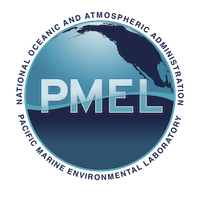About the 2010 North Pole Web Cams
The 2010 web cams were deployed on an ice floe drifting southward from the North Pole in April 2010. In some of the earlier photos you will see members of the North Pole deployment team in action.
 |
 |
 |
 |
| Photo during deployment operations. (April 19, 2010) |
Last image from Camera 1 (July 7, 2010) |
Rainbow seen by Camera 2 (July 5, 2010) |
Last clear image from Camera 2 ( September 29, 2010) |
- View animations of the web cams: small 1, 2 | large 1, 2 and
 : highlights and full length
: highlights and full length - Map showing drift tracks
- Web Cam 1 (green line labeled POPS-13)
- Web Cam 2 (red line labeled PAWS).
- This is also available from North Pole Environmental Observatory (NPEO) website.
- Weather Data (from the NPEO website):
- Web Cam #1: 2010 Weather Data from co-located instruments
- Web Cam #2: 2010 Weather Data from co-located instruments
- The solar powered Web Cams are set to turn on every 6 hours, at the top of the hour, take and transmit as many images as they can for 15 minutes, and then turn off. You can see this reflected in the date/time in the upper left corner of each image.
- Instrumentation you see in the images
- Summer sea ice transition since 2002
- a discussion of times of the onset of melt, melt pond coverage, and onset of freeze-up revealed by the North Pole Web Cams
- 2010 summer sea ice discussion by J. Morison and N. Untersteiner (University of Washington)
- in the Pan-Arctic Sea Ice Outlook in the Sea Ice Outlook .
- General Information about the North Pole Images
- more information about the web cams, what you see in the images, and the environment at the North Pole .
![]()
| • Web cam Home and Acknowledgments | |
| • Daylight and Darkness at the North Pole | |
| The North Pole Web Cam is part of the North Pole Environmental Observatory, a joint National Science Foundation-sponsored effort by the Polar Science Center, / APL / UW, the Pacific Marine Environmental Laboratory / NOAA, the Japan Marine Science and Technology Center, Oregon State University, and Cold Regions Research and Engineering Laboratory. |



